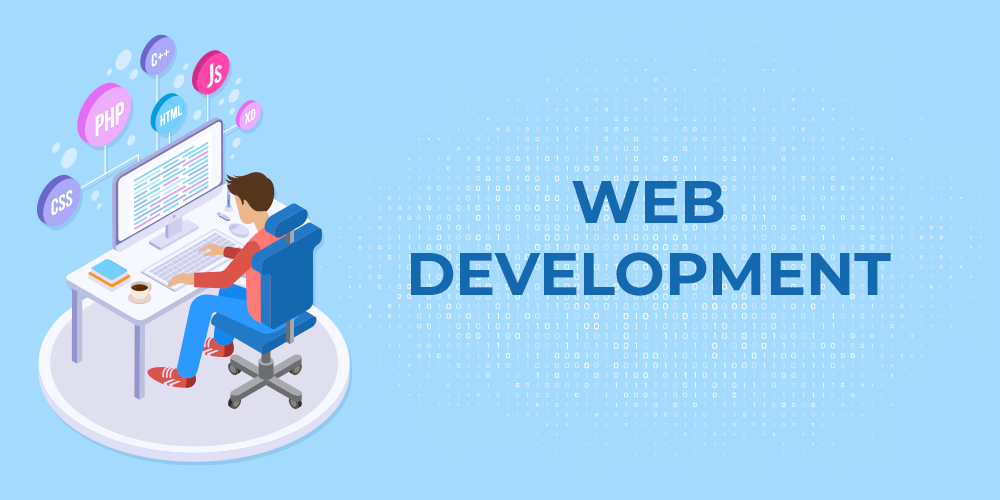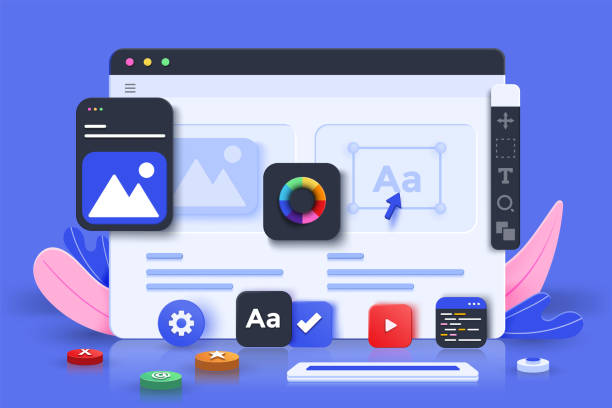Your Guide to Modern Internet Growth: Trends and Ideal Practices

Emerging Technologies in Internet Advancement
The evolution of web development is marked by an unrelenting search of advancement, driven by the desire to enhance individual experience and enhance procedures. Arising technologies remain to improve the landscape, supplying developers powerful tools to create more dynamic and responsive applications. Secret amongst these modern technologies are Dynamic Internet Applications (PWAs), which mix the most effective of web and mobile apps, supplying offline capability and boosted efficiency.
An additional considerable improvement is the surge of Expert system (AI) and Maker Discovering (ML), which allow customized individual experiences and data-driven decision-making. These innovations help with chatbots, recommendation systems, and boosted search capabilities, hence changing exactly how individuals communicate with web applications.
Additionally, the fostering of frameworks like React, Vue.js, and Angular has revolutionized front-end development, promoting modular layout and effective state administration. On the back end, serverless architecture and microservices cultivate scalability and adaptability, enabling developers to concentrate on creating code without managing framework.
Importance of Individual Experience
User experience (UX) has actually ended up being a critical focus in web development, specifically as emerging technologies improve interactions. A favorable UX not only enhances individual contentment however also drives interaction, retention, and conversions. In a progressively competitive electronic landscape, services need to prioritize UX to differentiate themselves and fulfill user assumptions.
Reliable UX layout is rooted in comprehending individual demands and behaviors. This includes performing comprehensive research study, producing customer personas, and utilizing functionality testing to collect understandings. By doing so, developers can produce user-friendly interfaces that promote smooth navigating and reduce rubbing points.
In addition, a properly designed UX can considerably affect an internet site's performance metrics. Researches have actually revealed that individuals are more most likely to abandon a site if they run into poor usability or excessive packing times. Alternatively, a structured, user-centric design can result in lower bounce rates and increased time invested in the site.
Accepting Responsive Style

Responsive design utilizes fluid grids, versatile photos, and CSS media questions to create a dynamic layout that adjusts in real-time. This approach not only improves functionality yet also contributes to improved online search engine positions, as search engines prefer websites that provide a constant experience across devices. Additionally, responsive design reduces the demand for numerous versions of a site, streamlining upkeep and updates.
In addition, receptive style promotes higher engagement by providing a tailored experience, maintaining customers on the website longer and decreasing bounce rates. As customer behavior remains to develop, investing in receptive style is vital for companies aiming to improve client complete satisfaction and drive conversions. In summary, taking on receptive design is not just a pattern; it is a fundamental practice that aligns with the assumptions of contemporary customers, making certain availability and performance regardless of the tool they choose to use.
Accessibility in Internet Development
Creating an internet site that is both receptive and easily accessible is essential for getting to a larger target market. Ease of access in internet advancement ensures that all customers, no matter their abilities or specials needs, can effectively engage with electronic content. This includes individuals with visual, auditory, cognitive, or electric motor impairments.

To achieve availability, designers should comply with the Web Web Content Access Standards (WCAG), which offer a framework for making internet content more perceivable, operable, understandable, and durable. Secret practices include making use of semantic HTML aspects, ecommerce web development perth offering alternative text for photos, guaranteeing sufficient shade comparison, and making it possible for key-board navigation.
In addition, executing ARIA (Accessible Abundant Web Applications) characteristics can boost availability, particularly for vibrant content and advanced user interfaces. Checking with real individuals, including those with specials needs, is important to recognize potential obstacles and boost individual experience.
Inevitably, prioritizing access not only improves compliance with legal criteria but likewise cultivates inclusivity, allowing companies to connect with a wider target market. As web advancement proceeds to evolve, embedding access right into the design and growth process is not just an ideal practice; it is web link an honest duty that benefits everybody.
The Increase of Progressive Internet Apps
A significant shift in web growth has actually emerged with the increase of Progressive Internet Applications (PWAs), which seamlessly combine the very best functions of mobile applications and typical websites. perth australia web development perth. PWAs are developed to supply customers with a quickly, trustworthy, and appealing experience, despite their web link. This is accomplished via solution employees, which make it possible for offline capacities and history syncing, ensuring that users can access content even in low-connectivity situations
PWAs also take advantage of receptive layout principles, guaranteeing that they work smoothly across a variety of tools and screen sizes. This flexibility is vital in a period where customers significantly count on mobile tools for their on-line tasks. Additionally, PWAs get rid of the requirement for different app store installations, enabling less complex and extra obtainable circulation.
The advantages encompass businesses too. PWAs can bring about enhanced user involvement, higher conversion prices, and decreased development expenses by maintaining a solitary codebase for both web and mobile systems. As companies strive to improve user experiences while optimizing effectiveness, the fostering of Progressive Web Apps remains to grow, strengthening their standing as an essential trend in modern internet development.
Verdict
Finally, modern internet advancement requires a why not try here complex approach that encompasses arising technologies, user experience, receptive design, ease of access, and the application of Modern Internet Apps. Following these patterns and best techniques not just boosts customer interaction yet additionally fosters inclusivity, making certain that electronic material comes to varied audiences. By prioritizing these components, developers can create impactful applications that meet the progressing demands of customers in a significantly digital landscape.